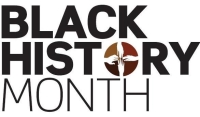October is Black History Month in the UK and is celebrated in the US and Canada too. It’s a time to celebrate the achievements of black people the world over, achievements made in spite of bigotry and racism.
 Whilst potentially difficult to get any maths out of the topic, one way is to look at the achievements of black athletes and this correlates very nicely with the 100th anniversary of the birth of one of the world’s greatest athletes – Jessie Owens and the prominence of the greatest athlete of our generation; Usain Bolt.
Whilst potentially difficult to get any maths out of the topic, one way is to look at the achievements of black athletes and this correlates very nicely with the 100th anniversary of the birth of one of the world’s greatest athletes – Jessie Owens and the prominence of the greatest athlete of our generation; Usain Bolt.
Jesse Owens was the Bolt of his generation; setting world records in events such as long jump, 100m and 200m sprints.
A bit of division work can be done through comparisons here. Ask the children which they think would jump the furthest distance in a long jump event if they were all the same weight; a flea, a grasshopper and the athlete. To get the answer, find out the weight of a flea, a grasshopper and Jesse Owens. Use one of them as a marker – most find using Jesse as the marker gives the most interesting result. Now divide Jesse Owens’ weight by the weight of the flea, then the grasshopper and multiply the distance each of the insects jumps by your answer. The answers are extraordinary. You may find some say that it’s a false comparison because the heavier a creature is the less likely it is to jump far but that’s not the case.
Usain Bolt’s success has been put down to his extraordinarily long stride. Most competitive athlete use at least 45 strides to run the 100m, Bolt uses around 40.
Tell the children this fact and they’ll want to see how close they get to the magic 40. Mark out a 100m line or track and get the children to walk it to begin with, counting how many steps they take. This will get them used to the idea of counting their paces as well as give them a comparison figure.
Now ask them to run the same course, counting once more. Divide the 100m by the number of paces they counted and they’ll get the length of their walking stride and their running stride.
Order the children in terms of height and get them to say what their walking stride was, then their running stride. Ask the children whether they think the length of stride is dependent on height.
A little work on circles and circumferences now, based on running. A standard running track is built to be 400m per lap on the inside lane and all runners will try to get as close to the inside edge as possible to reduce the distance they have to run.
Running tracks are usually two straights joined by two curves but by imagining the track to be circular you can work out the difference in distance run by athletes and what difference it may make to their times. For a 400m track, the radius would need to be approximately 64m (you can ask the more able to calculate this by substituting in the equation for calculating the circumference of a circle. Lanes are a metre wide so the outside of the lane would have a radius of 65m. Calculate the new circumference to find out how much further the athlete would have to run. (it’s around six metres)
The world record for the 400m is approximately 44.5 seconds for a man and 47.5s for a woman. If you divide the time by the distance you’ll find how long it takes to run a metre and by multiplying your answer by the six metres, you’ll see how much longer it would take to run if you weren’t on the inside of the first lane. It’s about 2/3 of a second. Not much, but often the difference between being a winner or not.
Dave Lewis
Primary Teacher
Looking for more inspiration, why not try Collins Big Cat…








